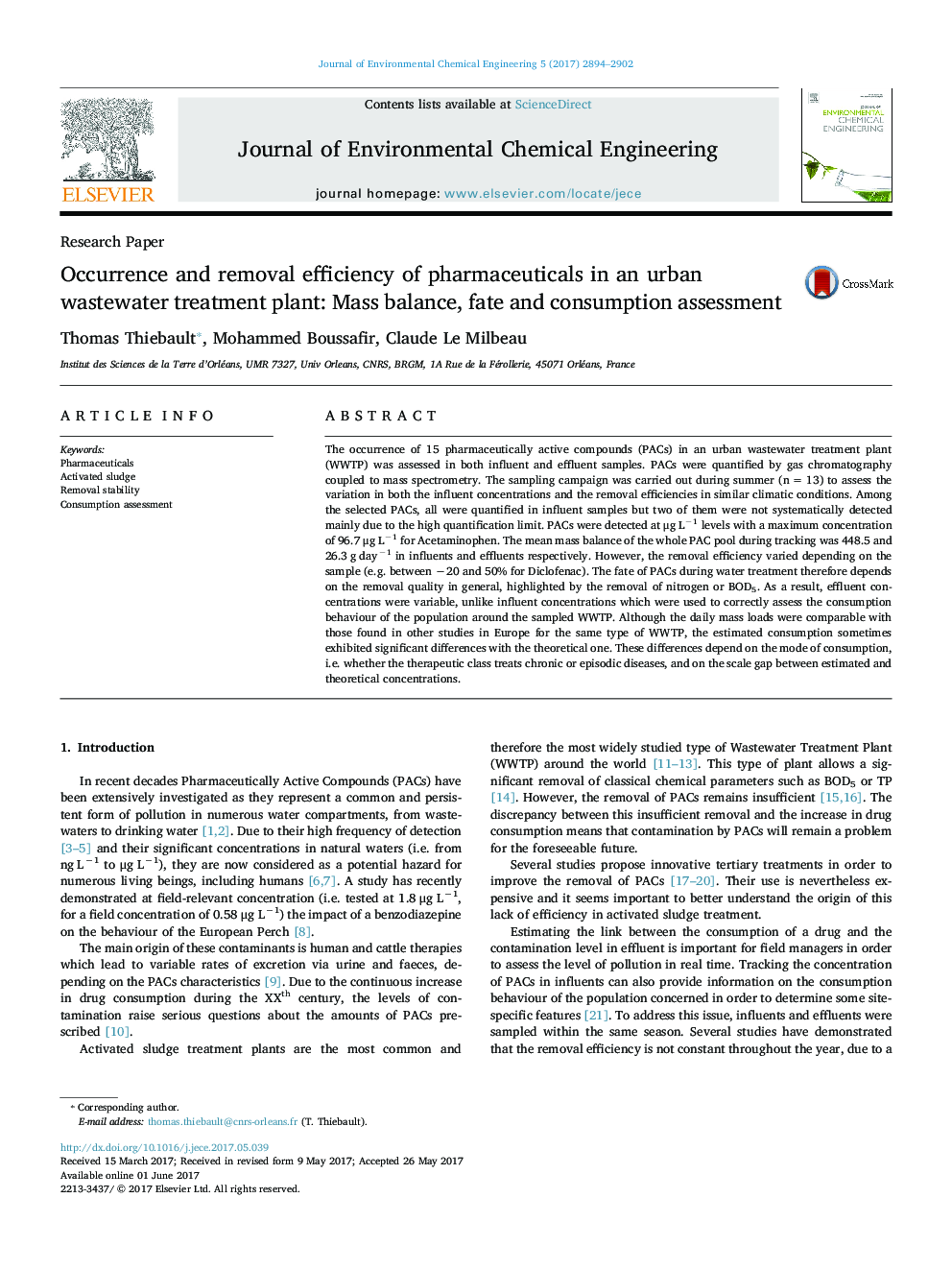| Article ID | Journal | Published Year | Pages | File Type |
|---|---|---|---|---|
| 4908435 | Journal of Environmental Chemical Engineering | 2017 | 9 Pages |
Abstract
The occurrence of 15 pharmaceutically active compounds (PACs) in an urban wastewater treatment plant (WWTP) was assessed in both influent and effluent samples. PACs were quantified by gas chromatography coupled to mass spectrometry. The sampling campaign was carried out during summer (n = 13) to assess the variation in both the influent concentrations and the removal efficiencies in similar climatic conditions. Among the selected PACs, all were quantified in influent samples but two of them were not systematically detected mainly due to the high quantification limit. PACs were detected at μg Lâ1 levels with a maximum concentration of 96.7 μg Lâ1 for Acetaminophen. The mean mass balance of the whole PAC pool during tracking was 448.5 and 26.3 g dayâ1 in influents and effluents respectively. However, the removal efficiency varied depending on the sample (e.g. between â20 and 50% for Diclofenac). The fate of PACs during water treatment therefore depends on the removal quality in general, highlighted by the removal of nitrogen or BOD5. As a result, effluent concentrations were variable, unlike influent concentrations which were used to correctly assess the consumption behaviour of the population around the sampled WWTP. Although the daily mass loads were comparable with those found in other studies in Europe for the same type of WWTP, the estimated consumption sometimes exhibited significant differences with the theoretical one. These differences depend on the mode of consumption, i.e. whether the therapeutic class treats chronic or episodic diseases, and on the scale gap between estimated and theoretical concentrations.
Keywords
Related Topics
Physical Sciences and Engineering
Chemical Engineering
Chemical Engineering (General)
Authors
Thomas Thiebault, Mohammed Boussafir, Claude Le Milbeau,
